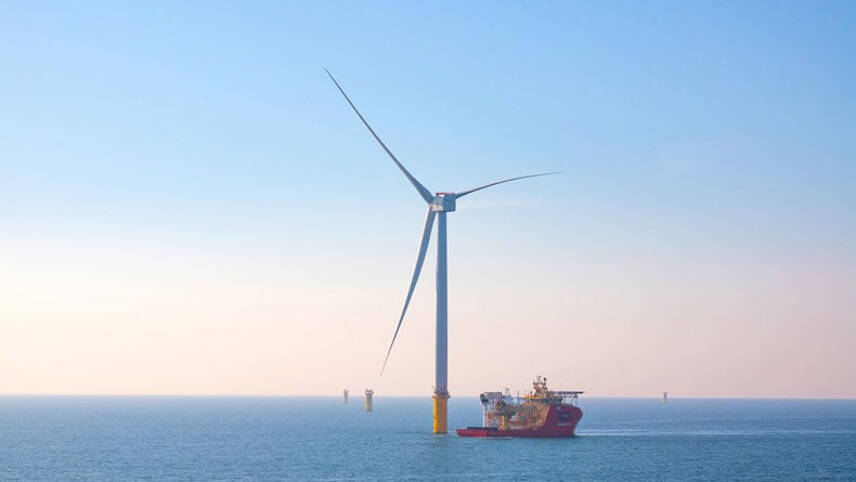Register for free and continue reading
Join our growing army of changemakers and get unlimited access to our premium content

Image: SSE
Developer SSE Renewables confirmed late on Monday (9 October) that one of the wind farm’s planned 277 turbines has delivered the first power from the project to the British grid. The firm is developing Dogger Bank in partnership with Equinor and Vargronn.
Dogger Bank is being developed in three phases, each of 1.2GW. Once completed, the project will be the largest of its kind in the world. Completion of the final phase is expected in 2026.
For now, a 13MW turbine within the first phase has been connected to the National Grid’s Creyde Back substation. Reinforcements had to be made to the substation to prepare for the connection.
Dogger Bank is the first place where these turbine models have been used globally. Each blade is more than 100 metres long and one full rotation of the three-blade turbine can power the average British home for two days.
National Grid’s director of customer connections John Twomey called the first connection for Dogger Bank “a momentous engineering achievement”.
SSE’s chief executive Alistair Phillips-Davies, similarly, called it “a landmark moment for the global offshore wind industry” and a “demonstration of just what can be achieved when policymakers, investors, industry and communities work together”.
Phillips-Davies said: “The innovations this pioneering project has developed will also mean future developments can be built faster and more efficiently, accelerating the clean energy transition. Now, of course, the challenge is to accelerate the next wave of these projects and we look forward to working with governments to bring these forward as soon as possible.”
Make or break?
Prime Minister Rishi Sunak called the news “fantastic to see” and said his Government sees offshore wind as “critical to generating renewable, efficient energy” on the road to net-zero.
The Conservative Government has a vision for the UK to host 50GW of offshore wind capacity by 2030. This supports an ambition to end unabated fossil fuelled electricity generation by 2035.
The industry has been urging Ministers to back up these top-line commitments with more interventions to unblock grid connection delays and provide more economic certainty as supply chain costs rocket. Due to these challenges, no offshore wind projects successfully bid in the UK’s most recent Contracts for Difference auction round.
Conservative Environment Network director Sam Hall said: ” We need to redouble efforts to remove the planning and regulatory barriers to building more of these projects and run successful CfD auctions.”


Please login or Register to leave a comment.